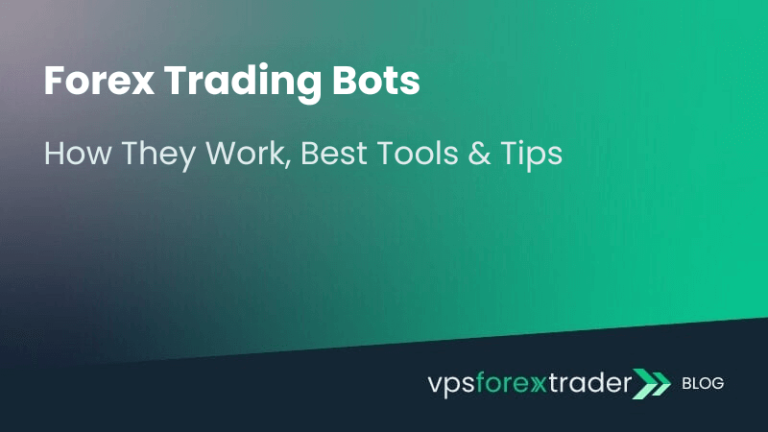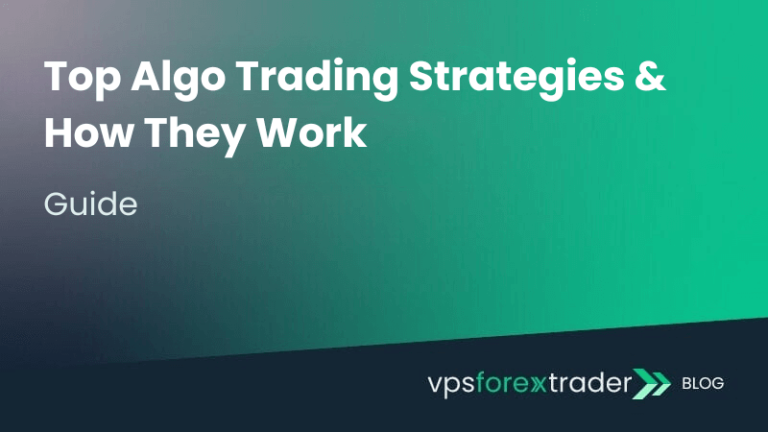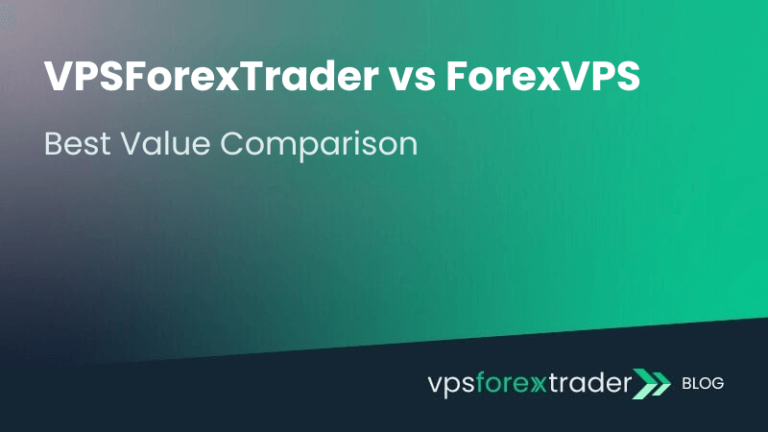In Forex trading, your success is heavily dependent on the platform you choose to trade on. The right platform is more than just a place to execute trades; it’s your primary tool for analysis, risk management, and market access. In a market that operates 24/5, efficiency, reliability, and robust features can be the difference between success and frustration.
This article is a comprehensive guide for everyone in the forex market. Whether you’re a beginner just taking your first steps, an experienced trader in need of advanced charting tools and execution speeds, or a mobile-first user prioritizing seamless on-the-go trading, our analysis has a platform recommendation for you.
In this guide, we dive deep into the criteria that define the Best Forex Trading Platforms in 2025. Our goal is to equip you with the knowledge that you need to select the platform that best aligns with your trading style and goals in the coming year.
How We Ranked the Platforms
Our ranking methodology is built on a rigorous, objective framework designed to identify the true market leaders in the Forex trading platform market. Beyond simply believing their marketing claims, we evaluated each platform based on key features like their spread, leverage, and trading tools. We also evaluated the ease of use and compliance with regulations for each platform. Testing rigorously based on these factors ensures that our recommendations are tailored to the diverse needs of the modern forex trader.
Regulation and Security
This is the most crucial factor in evaluating a forex trading platform as it determines the broker’s safety and reliability. A top-tier platform must operate with complete transparency under the supervision of stringent, globally recognized financial authorities. Preference was given to brokers regulated by top-level bodies, such as the FCA (UK), ASIC (Australia), and CFTC/NFA (US), ensuring compliance with the highest standards of financial conduct and client protection.
Spreads and Commissions
The total cost of trading has a direct and continuous impact on a trader’s profitability. Our analysis assessed overall trading expenses across various account types. We analyzed the average variable and fixed spreads on major currency pairs (e.g., EUR/USD, GBP/USD) during peak and off-peak market hours to identify truly competitive pricing.
For Raw/ECN accounts, we compared the fixed commission per lot traded to calculate the all-in cost for active traders. Other fees such as overnight swap rates, deposit/withdrawal charges, and inactivity fees were also compared across platforms.
Platform Tools and Technology
A platform’s technological capability directly influences a trader’s ability to analyze the market and execute trades effectively. This is why it is important to check the technical analysis tools available on a platform. Some of the features to watch out for include advanced indicators, timeframes and customizable charting features. We prioritize platforms with demonstrated low-latency order execution and reliable server stability. These are tools particularly crucial for scalpers and algorithmic traders.
Ease of Use and User Experience (UX)
While pros demand power, all users require a reliable, intuitive, and accessible trading environment across all devices. We evaluated the ease of navigation, clarity of the interface, and simplicity of order placement on both desktop and web-based platforms. For platforms with mobile apps, we tested the dedicated mobile apps and compared them with desktop versions to determine how efficient they are for on-the-go trading.
Leverage and Margin Flexibility
Leverage is a double-edged sword, and the maximum allowed levels must be considered alongside the regulatory environment. Maximum Leverage: We noted the maximum leverage offered on major, minor, and exotic pairs, clearly differentiating between the generally high leverage available from offshore brokers and the typically lower limits mandated by Tier-1 regulators (e.g., 1:30 in the EU).
The Best Forex Trading Platforms in 2025
Based on these and other criteria, we have compiled a list of the best forex trading platforms you should consider in 2025. Here’s a brief overview of each platform and their ideal user persona.
1. IG (UK/EU) – Best Overall
IG is a global market leader, renowned for its excellent all-around offerings. This platform is regulated by multiple top-tier authorities, including the FCA (UK), ASIC (Australia), and is part of the publicly traded IG Group Holdings Plc on the London Stock Exchange (LSE). IG offers proprietary platforms, MT4, and advanced charting tools like ProRealTime.
Pros
- Highly regulated (FTSE 250 company, top-tier global regulation).
- Excellent proprietary trading platform and mobile app.
- Wide selection of tradable markets (17,000+).
Cons
- Stock and CFD spreads can be higher than discount brokers.
- No guaranteed stop losses or account protection for US clients.
Who it’s best for: Traders in need of comprehensive market access and tools.
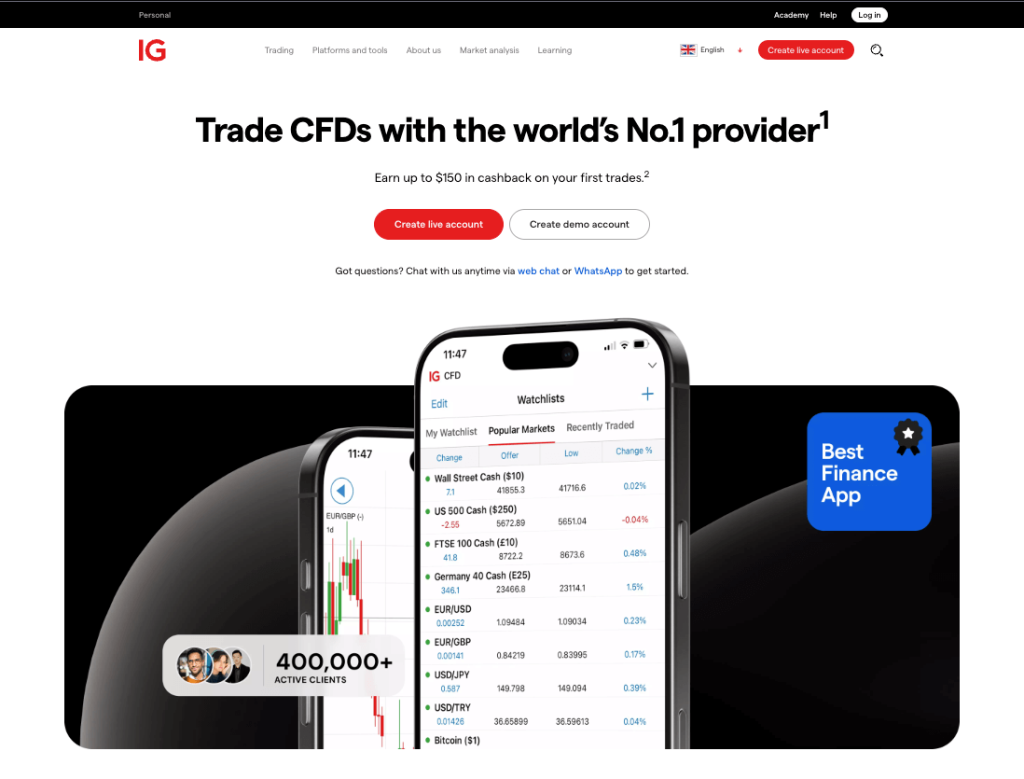
2. OANDA – Best for Beginners
OANDA is a highly-regulated broker with a strong focus on forex trading. It is regulated by the CFTC and NFA in the United States, the FCA in the UK, and numerous other global bodies. OANDA is known for its straightforward trading experience with low minimum deposits, multiple platform choices (proprietary platform, MT4, TradingView), and a strong suite of research tools.
Pros
- Easy to use.
- Zero minimum deposit on the standard account.
- Highly regulated by top-tier bodies globally (including CFTC/NFA for US clients).
- Excellent research tools.
Cons
- Ancillary fees may apply.
- Some product offerings limited to some markets.
- No negative balance protection or guaranteed stop-losses for US clients.
Who it’s best for: Beginners and seasoned traders in the US (for forex only) and UK/EU (wider product offering).
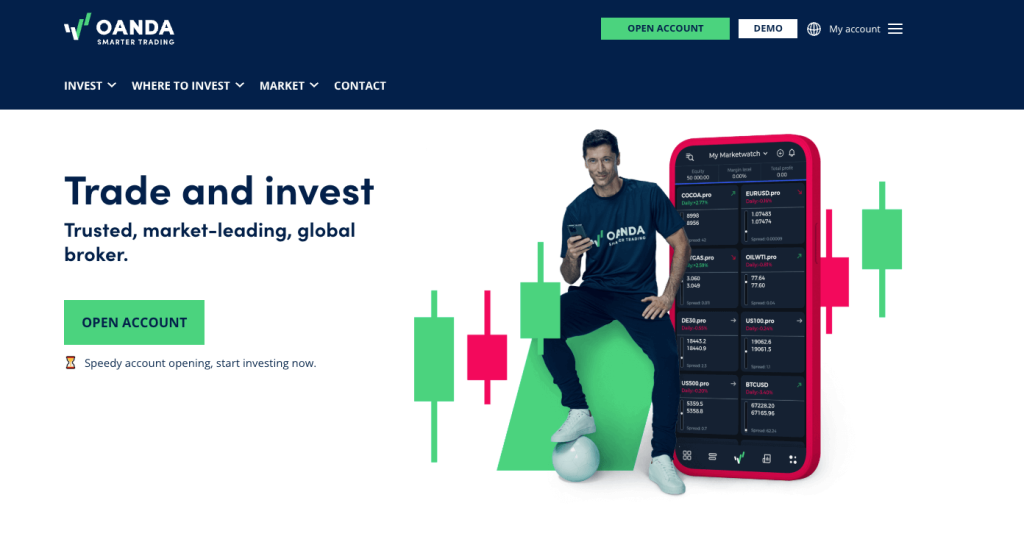
3. Pepperstone – Best for Raw Spreads
Pepperstone is an ECN/STP broker used worldwide excluding the US/Canada. This platform is regulated by top regulatory authorities including the ASIC (Australia), FCA (UK), and CySEC (Cyprus). Pepperstone is known for its lightning-fast execution and extremely tight, raw spreads on its Razor Account. This makes it a favorite for active traders and those using Expert Advisors (EAs).
Pros
- Highly competitive, raw spreads from 0.0 pips (Razor Account).
- Supports multiple major platforms (MT4, MT5, cTrader, TradingView).
- Top-tier global regulation (ASIC, FCA, CySEC).
Cons
- Limited to CFD trading (no direct asset ownership).
- Restricted in certain regions (e.g., US, Canada).
Who it’s best for: Algorithmic traders and scalpers.
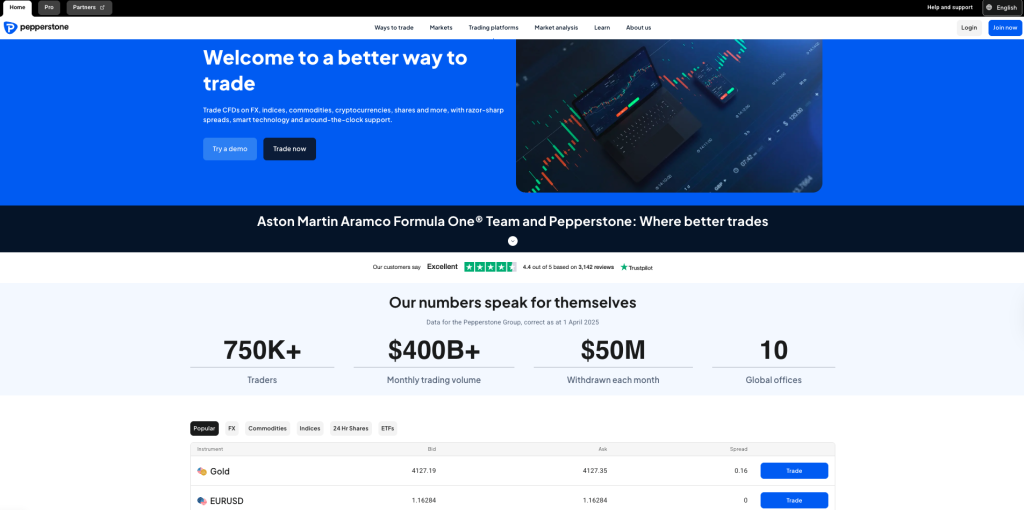
4. IC Markets – Best for Automated Trading (MT4/cTrader)
IC Markets is a popular platform that offers an optimized trading experience for both retail and institutional traders. This platform can be used by traders all over the globe and is regulated by top authorities like ASIC (Australia) ySEC (Cyprus), as well as the FSA (Seychelles) for global clients.
A major feature of its platform is its automated trading features, which offers users a choice between three industry-leading third-party platforms (MT4, MT5, cTrader). IC Markets is also known for its raw spread accounts with very low commissions, which are optimized for Expert Advisors.
Pros
- Excellent platform choice for automated trading (MT4/MT5/cTrader).
- Extremely low spreads (Raw Spread account) and commission.
- High leverage options available outside of strict regulatory zones.
Cons
- Not listed on a stock exchange (less financial transparency compared to some other platforms.
- Limited product range (only CFDs; no real stocks/ETFs).
Who it’s best for: Automated traders and scalpers using cTrader/MT4/MT5.
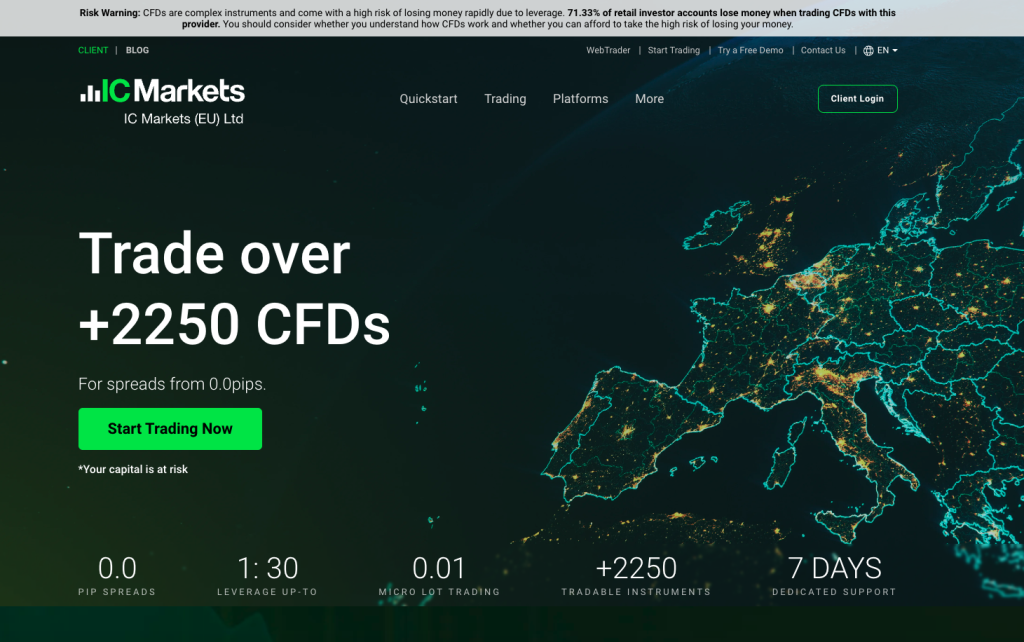
5. Forex.com – Best for US Traders
Forex.com is a globally recognized broker, part of the publicly-listed StoneX Group Inc. It’s one of the few major, well-regulated options available to US clients, offering multiple account types with competitive spreads and a wide array of research tools. It is regulated by the CFTC and NFA in the United States as well as the FCA in the UK.
Pros
- Only major, top-tier regulated option for US forex traders.
- Listed on the NYSE (StoneX), which guarantees high financial transparency.
- Offers different research, charting, and trading tools.
Cons
- Maximum leverage capped at 1:50 for major pairs in the US.
- High fees (withdrawal and stock CFD fees).
Who it’s best for: High-Volume, Dedicated FX Traders.
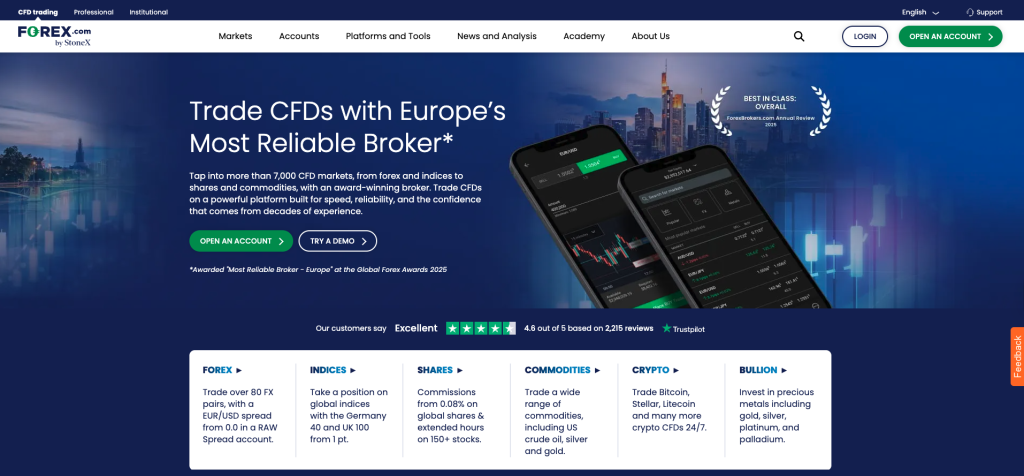
6. AvaTrade – Best for Copy Trading
AvaTrade is a regulated international broker that offers traders a variety of platforms. This includes the MT4/MT5 platform, the proprietary AvaTradeGO app, and dedicated social/copy trading solutions like DupliTrade and AvaSocial. This platform is one of the best for social traders. AvaTrade is available all over the world except in the US, Canada, and Belgium.
Pros
- Excellent choice of copy/social trading platforms (AvaSocial, DupliTrade).
- Wide regulatory oversight across several jurisdictions.
- Dedicated options trading platform (AvaOptions).
Cons
- High inactivity and annual administration fees for non-use.
- Uses a market maker (dealing desk) model, which may not suit all traders.
Who its best for: Copy traders and new traders looking for a broker.
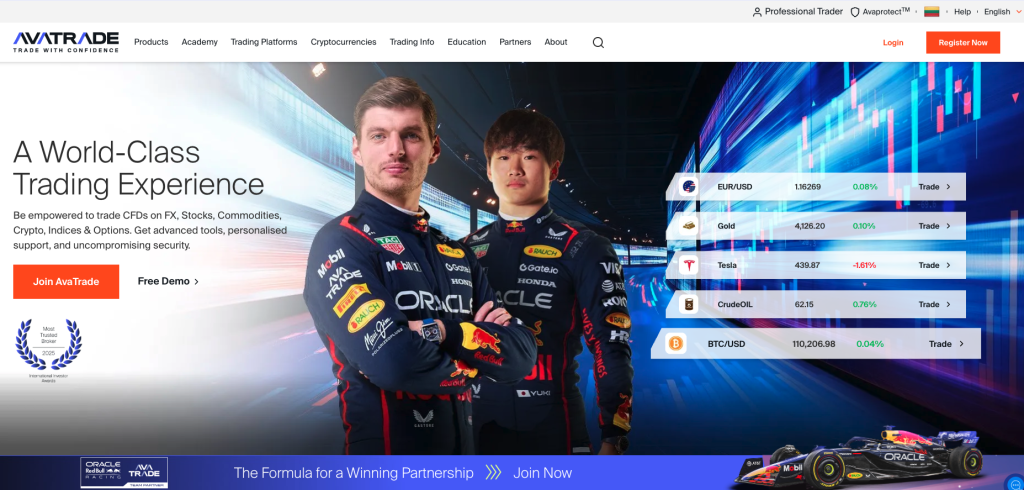
7. eToro – Best for Social & Multi-Asset Traders
eToro is a multi-asset trading platform offering stocks, ETFs, crypto, and CFDs within a single, user-friendly interface. This platform pioneered social trading with its CopyTrader feature, allowing users to automatically copy successful investors. It’s a regulated platform with oversight from numerous top-tier authorities, including the FCA, ASIC, and CySEC.
Pros
- Beginner-friendly platform.
- Industry-leading social and copy trading (CopyTrader and Popular Investor program).
- Access to a wide range of assets (stocks, ETFs, crypto, CFDs) on one platform.
Cons
- Limited charting platforms (no MT4/MT5 integration).
- No guaranteed stop-loss orders.
Who it’s best for: Social traders, beginners, and those who want to manage a multi-asset portfolio.
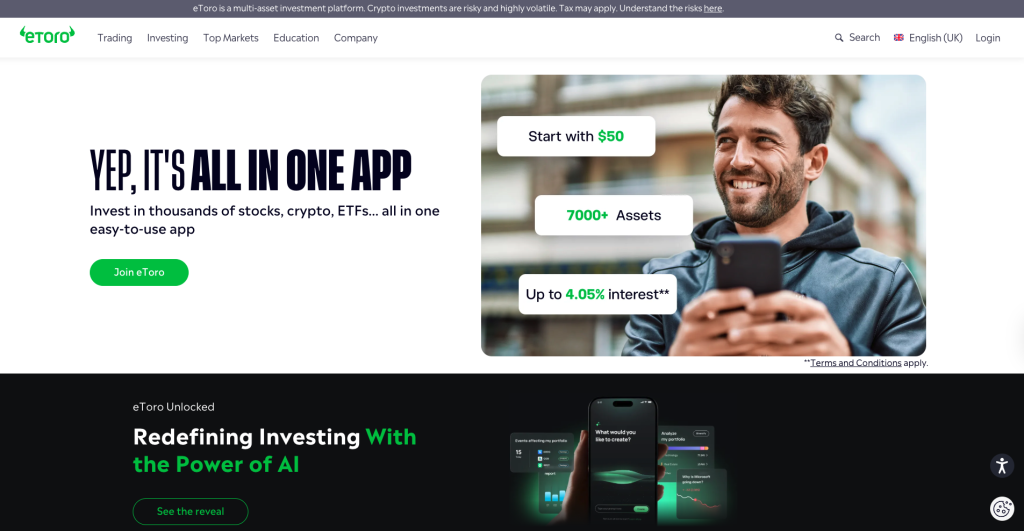
8. Capital.com – Best for Learning Tools
Capital.com offers commission-free CFD trading across a wide range of assets with competitive spreads and strong platform technology. This trading platform is also highly-regarded for its extensive educational resources, including the Capital.com mobile app and a dedicated learning hub among other features. This platform is available globally (except in the US) and regulated across different jurisdictions including the UK, Cyprus, Australia and the Bahamas.
Pros
- Elite educational ecosystem (webinars, videos, learning app).
- Commission-free trading and low spreads (EUR/USD from 0.6 pips).
- Advanced features including AI-powered research and TradingView integration.
Cons
- CFD trading only (no real stocks/options).
- Does not accept US traders.
Who it’s best for: Beginners and active traders who prioritize educational support and a user-friendly experience.
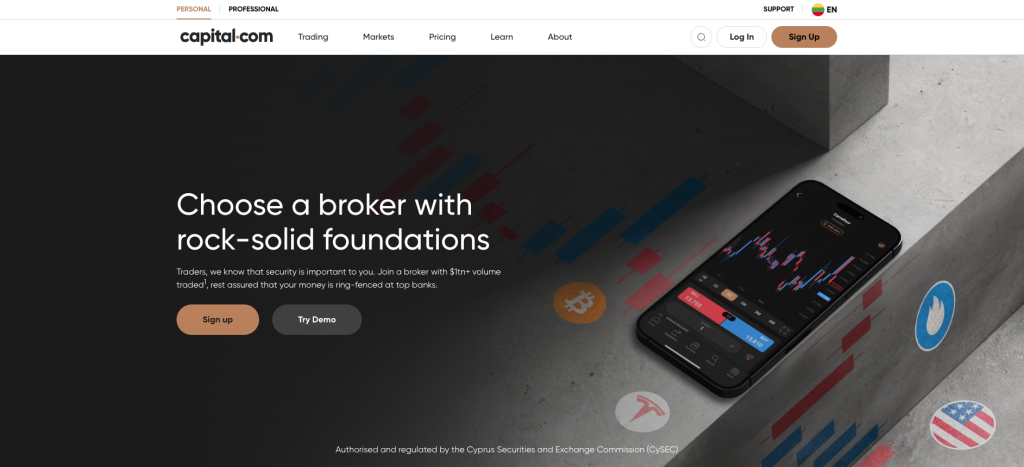
Forex Platforms Availability Overview (2025)
| Platform | Headquarters / Regulation | Key Regions Available | Regions Restricted | Best For | Key Notes / Icons |
|---|---|---|---|---|---|
| IG | 🇬🇧 UK (FCA, ASIC, EU) | UK, EU, Australia, Asia, Africa | ❌ US (limited products) | All-around traders | Global coverage, 17K+ markets, ProRealTime platform |
| OANDA | 🇺🇸 US / 🇬🇧 UK / Global | US, UK, EU, Canada, Asia | ❌ Some emerging markets | Beginners | CFTC/NFA regulated, simple platform, TradingView integration |
| Pepperstone | 🇦🇺 Australia / 🇨🇾 Cyprus / 🇬🇧 UK | EU, UK, Australia, Asia, LATAM | ❌ US, Canada | Algorithmic & scalping traders | Raw spreads (Razor), MT4/5, cTrader |
| IC Markets | 🇦🇺 Australia / 🇨🇾 Cyprus / 🇸🇨 Seychelles | Global (except strict jurisdictions) | ❌ Some EU restrictions | Automated traders | MT4/MT5/cTrader, raw spreads, EAs optimized |
| Forex.com | 🇺🇸 US (CFTC/NFA, FCA, Canada) | US, UK, Canada, Japan | ❌ Limited in EU outside UK | US Traders | NYSE-listed (StoneX), top-tier regulation |
| AvaTrade | 🇮🇪 Ireland / 🇨🇾 Cyprus / 🇯🇵 Japan / 🇦🇺 Australia | Global (100+ countries) | ❌ US, Canada, Belgium | Copy/Social traders | AvaSocial, DupliTrade, AvaOptions |
| eToro | 🇮🇱 Israel / 🇬🇧 UK / 🇨🇾 Cyprus / 🇦🇺 Australia | EU, UK, Australia, Asia, LATAM | ❌ US (CFDs), Canada | Social & multi-asset traders | CopyTrader, crypto/stocks/CFDs |
| Capital.com | 🇬🇧 UK / 🇨🇾 Cyprus / 🇦🇺 Australia / 🇧🇸 Bahamas | Global (except US) | ❌ US | Learning-focused traders | Commission-free CFDs, AI learning tools |
Feature Comparison Table
The table below provides a comparison of key features for the various trading platforms listed above. It shows differences in spread, leverage, supported account types, platforms and so on. It’s important to note that spreads and leverage often vary significantly depending on the client’s location (due to different regulatory regimes), the specific account type, and market conditions.
| Platform | Spreads (EUR/USD, typical/from) | Max Leverage (Retail/Non-EU) | Account Types | Key Platforms | Key Tools/Features | Regulation |
| IG | From 0.6 pips (Spread Betting) / Average 0.85 pips (Spread Betting) | Up to 1:30 (Retail) | Spread Betting, CFD, Professional | Proprietary Web/Mobile, MT4, ProRealTime, L2 Dealer | Advanced charting, ProRealTrends (automatic trendlines), IG TV, Trading signals | Highly regulated (e.g., FCA, BaFin, ASIC, MAS, CFTC/NFA) |
| OANDA | Competitive spreads (variable, historical data available) | Up to 1:30 (Retail) / Up to 1:200 (Professional/Non-EU) | Standard, Elite Trader, Professional, Spread Betting (UK/Ireland) | Proprietary Web/Mobile, MT4, MT5, TradingView | Advanced charts, Depth of Market, MT4 premium indicators, Technical analysis tools | Highly regulated (e.g., FCA, CFTC/NFA, ASIC, IIROC, MAS) |
| Pepperstone | From 0.0 pips (Razor + commission) / From 1.0 pip (Standard, commission-free) | Up to 1:30 (Retail) / Up to 1:500 (Non-EU) | Standard, Razor (low-commission), Islamic | MT4, MT5, cTrader, TradingView, Proprietary Web/Mobile | Autochartist, Smart Trader Tools for MT4/MT5, Copy Trading options (e.g., cTrader Copy) | Well-regulated (e.g., ASIC, FCA, CySEC, CMA) |
| IC Markets | From 0.0 pips (Raw Spread + commission) / From 0.8 pips (Standard, commission-free) | Up to 1:30 (Retail) / Up to 1:500 or 1:1000 (Non-EU/Professional) | Standard, Raw Spread (MT4/MT5), Raw Spread (cTrader), Islamic | MT4, MT5, cTrader, TradingView | MT4/MT5 upgrade package, MAM/PAMM accounts, Social trading (Myfxbook, ZuluTrade, MetaTrader Signals) | Regulated (e.g., ASIC, CySEC, FSA, SCB) |
| Forex.com | As low as 0.0 pips (RAW Spread + commission) / As low as 1.2 pips (Standard, spread-only) | Up to 1:50 (US) / Up to 1:30 (EU/UK) / Up to 1:400 (Non-EU) | Standard (Spread-only), RAW Spread, MT4/MT5-specific | Proprietary Web/Mobile, MT4, MT5, TradingView | Performance Analytics, Reuters news, Advanced charting, Active Trader program (rebates) | Highly regulated (e.g., CFTC/NFA, FCA, CIRO, ASIC) |
| AvaTrade | Fixed spreads (e.g., 0.8 pips for Standard) / Tighter for Professional | Up to 1:30 (Retail) / Up to 1:400 (Professional/Non-EU) | Standard, Professional, Islamic, AvaOptions (options trading) | MT4, MT5, Proprietary AvaTradeGO, AvaOptions, DupliTrade (Copy Trading) | AvaProtect (risk management), AvaTradeGO app with social trends, Trading tools and calculators | Highly regulated globally (e.g., Central Bank of Ireland, ASIC, FSCA, FSA, FSC, FRSA) |
| eToro | From 1 pip (Currencies) / Variable | Up to 1:30 (Retail) / Up to 1:400 (Non-EU) | Single (unified account for all assets) | Proprietary Web/Mobile | CopyTrading (CopyTrader), Smart Portfolios, Social feed, Crypto staking, Investment Portfolios | Well-regulated (e.g., FCA, CySEC, ASIC, FinCEN/MSB) |
| Capital.com | Low variable spreads (e.g., 0.6 pips on EUR/USD typical) | Up to 1:30 (Retail) / Up to 1:200 (Non-EU) | CFD/Spread Betting Account (unified) | Proprietary Web/Mobile, MT4, TradingView | AI-powered trading features (SmartFeed), Economic Calendar, 100+ Indicators, Educational Tools | Well-regulated (e.g., FCA, CySEC, ASIC, SCB) |
How to Choose the Right Platform for You
As the list above shows, there are several excellent trading platforms that you can choose from. Each of these platforms has its own unique features, cost structures, and target users. Here’s a guide that you can follow to evaluate the most suitable platform for you.
Your region and regulation
The first, and arguably the most important step in selecting a suitable trading platform is to confirm that it works in your location. In the US for instance, only a few trading platforms are permitted to operate which means traders here are only limited to these platforms.
You should also check if the platform you’re considering is regulated by a reputable authority. Regulated platforms are generally safer because they typically follow strict rules for handling client funds, transparency, and conduct.
Trading experience
Your experience level determines whether you should prioritize simplicity or go for advanced features. Beginners need to prioritize platforms with user-friendly interfaces, comprehensive educational resources (webinars, tutorials), and paper trading (demo account) to practice risk-free. They also need accessible customer support so they can find help to navigate issues.
More experienced users can look out for professional-grade platforms with advanced charting tools, a wide range of technical indicators, API access, fast and reliable order execution. Access to multiple markets/asset classes could also be an advantage.
Mobile or desktop first
Your trading style and schedule determine which version of the platform you’ll rely on most. Desktop/Web platforms often offer the full suite of advanced features, which is why they’re preferred by traders that intend to carry out deep analysis or execute complex strategies.
On the other hand, mobile is known to provide portability and quick access to execute trades and monitor positions. Casual traders and those who desire to monitor the market while on-the-go should look out for platforms offering mobile experiences.
Need for automation or custom indicators
If you plan to use algorithmic trading with tools such as Expert Advisors/Trading Robots, or custom indicators, your choice is heavily restricted to platforms that support this functionality. This means you have to look for platforms that allow you to build, backtest, and deploy automated strategies.
But for traders who decide to create their own indicators, they must look for platforms with a supported programming language. Traders who wish to continue 24/7 automated trading, will also need a platform that supports or integrates easily with a Virtual Private Server (VPS) to ensure your trading bot is always running.
Deposit size and fee sensitivity
If you have a small initial deposit, look for platforms with a low minimum deposit requirement. Some platforms cater to retail traders with very low barriers to entry while others are more suitable for more advanced users with bigger portfolio. You also need to examine the fee structure of the trading platform to determine if it is suitable for you.
Platform Types Explained
MetaTrader 4/5
MetaTrader platforms are the industry standard for retail forex and CFD trading, known for their powerful algorithmic trading features. They are known for their reliable and relatively simple interface. These platforms also have a massive and established community, with a vast library of custom indicators and EAs.
cTrader
cTrader is a sophisticated trading platform popular with traders who value clean design, speed, and transparent pricing from their broker. Designed for true ECN (Electronic Communication Network) trading, aiming to provide transparent, direct market access, popular for Forex and CFDs.
Proprietary web-based platforms
This refers to trading platforms that are developed and owned by a specific brokerage firm. They’re designed to be accessed directly through a web browser without the need for a download. These platforms provide a highly integrated trading experience exclusive to the broker’s clients, often tailored to their specific market offerings.
TradingView integrations
TradingView is a cloud-based social networking service and advanced charting platform, highly popular for its exceptional charting tools and large community. Trading platforms that support trading view integrations allow traders to connect their brokerage account directly to the TradingView interface. This way, they can execute trades straight from the platform’s advanced charts, bridging the gap between analysis and execution.
Mobile apps
Some platforms have applications that can be used to trade on smartphones and tablets (iOS and Android). These are often offered by brokers in addition to their desktop or web platforms, sometimes in partnership with platforms like MetaTrader or cTrader. Mobile trading platforms offer maximum convenience, allowing traders to monitor markets, check their portfolio, and execute trades while on the go.
Common Mistakes When Choosing a Platform
To choose the right trading platforms, you should be aware of the common pitfalls that traders often face and how to avoid them. Some of these common mistakes are listed below:
Ignoring withdrawal fees
Many traders focus heavily on commissions and spreads (the cost of trading) but fail to examine the fees associated with getting their money out of the platform. However, a broker might offer extremely low trading costs, only to charge high, hidden, or confusing withdrawal fees for bank transfers.
Over-prioritizing leverage
Leverage allows a trader to control a large position with a small amount of capital. New traders are often attracted to brokers offering the highest possible leverage believing it is the key to massive wealth. But leverage magnifies losses just as quickly as it magnifies gains. Instead of focusing on this feature alone, choose a platform that offers leverage appropriate for your experience and strategy, and be aware of the margin requirement.
Falling for bonuses or gimmicks
It isn’t uncommon to find brokers or trading platforms using enticing offers like deposit bonuses, free money, or trading competitions to get new clients to sign up. While these bonuses sound great, they often come with extremely restrictive terms and conditions structured to make it virtually impossible to withdraw the bonus funds. Some bonus conditions may also encourage overtrading. Instead of getting swayed by bonuses, focus on the broker’s core offering and features.
Final Verdict: Our Top Picks
Ultimately, the best trading platform is the one that best fits your individual trading style and goals. For instance, beginners should go for intuitive trading platforms that offer learning resources such as OANDA and Capital.com. Similarly, traders looking for the best spreads should choose platforms like Pepperstone. Our top pick for the best overall trading platform is IG, renowned for its versatility and all-round offerings which makes it suitable for traders at all skill or experience levels.
Remember that choosing a platform is a serious decision that affects your execution speed, costs, and capital security. The biggest mistake you can make is funding a live account before experiencing the platform firsthand.We strongly encourage you to sign up for demo accounts with at least two of your top-ranked platforms before choosing the best one and funding your account.
FAQs
What’s the safest forex trading platform?
The safest forex trading platform is typically one that is highly regulated by multiple, top-tier global authorities (like the FCA, SEC, CFTC, ASIC, etc.) and has a long-standing history of trust and security. IG and Forex.com are often rated highly for their security and extensive regulation.
Are no-deposit bonuses worth it?
No-deposit bonuses can be worth it for beginners who want to practice trading with real capital and test a broker’s platform and execution speed without risking their own money. However, they often come with strict conditions that make it difficult to realize any profit with them.
Do all forex platforms offer leverage?
Yes, virtually all forex platforms and brokers offer leverage. The exact leverage ratio offered tend to vary from one platform to the other.
Is MetaTrader still relevant in 2025?
Yes. MetaTrader is still very popular and relevant in 2025. It is particularly famous with traders that are focused exclusively on forex and those who rely on its massive community-driven library of Expert Advisors (EAs) and custom indicator.
Can I trade forex 24/5 on mobile?
Yes, you can trade forex 24/5 on mobile. Nearly all major forex brokers offer dedicated, full-featured mobile trading apps (for iOS and Android) that allow you to monitor charts, execute trades, and manage your account at any time while the market is open.
Sources:
https://www.forex.com/en/trading-platforms
https://www.dailyforex.com/forex-brokers/best-forex-brokers/automated-trading


